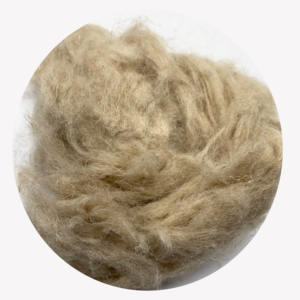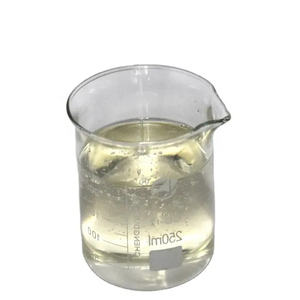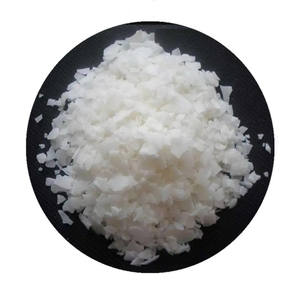
PVA Fiber for Concrete Reinforce PVA Fibre Vinylon Polyvinyl Alcohol High Strength High Modulus Staple PVA Fiber

Concrete Self-Leveling Cement Additive Water Reducing Agent High Water Reduction Rate Polycarboxylate Superplasticizer

Chemical Raw Material PCE polycarboxylate superplasticizer in concrete

Waterproof roof paint High Quality Liquid rubber roof coating Concrete Roof Waterproof Coating

Partition wall malaysia waterproof external wall panel light weight composite partition board concrete panels fiber cement panel

122-20-3 Triisopropanolamine TIPA 85% for Cement and Concrete Industry
Overview of 16/0.2 Micro Rebar Straight Steel Fiber For Concrete Reinforcement Cement Board UHPC Micro Steel Fibers
Concrete fibers, also known as fiber-reinforced concrete (FRC), are a type of composite material where discrete fibers are uniformly dispersed throughout a concrete matrix to improve its mechanical properties and performance. These fibers can be made from various materials, including synthetic polymers, steel, glass, and natural substances like cellulose, each offering unique benefits to the concrete mix. The primary purpose of incorporating fibers into concrete is to enhance its tensile strength, resistance to cracking, impact resistance, and durability, making it suitable for applications where traditional plain concrete may be insufficient.
Features of 16/0.2 Micro Rebar Straight Steel Fiber For Concrete Reinforcement Cement Board UHPC Micro Steel Fibers
Improved Crack Resistance: Fibers act as micro-reinforcements that hinder crack propagation, resulting in reduced crack widths and improved overall integrity.
Increased Toughness: The addition of fibers boosts the material's toughness, or ability to absorb energy without fracturing, making it more resistant to impacts and vibrations.
Enhanced Durability: By controlling crack formation, fibers protect concrete from aggressive chemicals and water ingress, prolonging its service life.
Three-Dimensional Reinforcement: Unlike conventional rebar, fibers distribute reinforcement in all directions, providing comprehensive support within the concrete mass.
Ease of Placement: Fiber-reinforced concrete can be poured, sprayed, or cast just like regular concrete, often without the need for additional reinforcement steps.

(16/0.2 Micro Rebar Straight Steel Fiber For Concrete Reinforcement Cement Board UHPC Micro Steel Fibers)
The parameters for the "16/0.2 Micro Rebar Straight Steel Fiber For Concrete Reinforcement cement Board UHPC Micro Steel Fibers" mentioned in the question can vary depending on various factors such as the intended application, the required strength, and the specific requirements of the project. However, some general guidelines for determining these parameters might include: - The desired strength: The material should be strong enough to the expected weight of concrete without cracking or deformation. - The required bending modulus: This value should be specified based on the specific conditions of the project (e.g., under tension, shear, compression, etc.). A higher bend modulus will allow for greater stress distribution throughout the material and better support the concrete beam. - The length of the concrete reinforcement board: The material should be able to provide a sufficient span for the reinforced concrete board. The length of the beam should also be specified based on the specific needs of the project (e.g., fire resistance, seismic isolation). - The bond strength: This value should be specified based on the specific bond characteristics of the material, such as the way that the fibers interact with the concrete. A high bond strength is important for providing strong and durable connections between the steel fibers and the concrete. - The yield strength: The yield strength should be specified based on the fatigue and corrosion resistance of the material. A higher yield strength allows for longer durability and lower downtime. These are just some general guidelines, and there may be additional parameters that need to be considered depending on the specific requirements of the project. It's recommended to consult with a materials scientist or engineer who has experience in working with and steel fibers for more accurate information.

(16/0.2 Micro Rebar Straight Steel Fiber For Concrete Reinforcement Cement Board UHPC Micro Steel Fibers)
Applications of 16/0.2 Micro Rebar Straight Steel Fiber For Concrete Reinforcement Cement Board UHPC Micro Steel Fibers
Industrial Flooring: In warehouses, factories, and parking lots where high abrasion resistance and durability are crucial.
Concrete Pavements: Highway overlays, airport runways, and sidewalks benefit from increased resistance to rutting, fatigue cracking, and thermal stresses.
Pre-cast Elements: Manufacturing of concrete blocks, panels, and other precast products where improved toughness and crack control are required.
Shotcrete: In mining, tunneling, and slope stabilization projects where rapid application and high early strength are essential.
Concrete Repair and Retrofitting: Strengthening of existing concrete structures, patching, and rehabilitation works where reinforcement enhancement is needed.
Cie-China is a trusted global chemical material supplier & manufacturer with over 12-year-experience in providing super high-quality concrete additives and relatives products.
The company has a professional technical department and Quality Supervision Department, a well-equipped laboratory, and equipped with advanced testing equipment and after-sales customer service center.
If you are looking for high-quality concrete materials and relative products, please feel free to contact us or click on the needed products to send an inquiry.
L/C, T/T, Western Union, Paypal, Credit Card etc.
It could be shipped by sea, by air, or by reveal ASAP as soon as repayment receipt.
FAQs of 16/0.2 Micro Rebar Straight Steel Fiber For Concrete Reinforcement Cement Board UHPC Micro Steel Fibers
Q: Does 16/0.2 Micro Rebar Straight Steel Fiber For Concrete Reinforcement Cement Board UHPC Micro Steel Fibers replace steel reinforcement in concrete completely? A: No, fibers complement rather than replace steel reinforcement. While they significantly improve the concrete's tensile strength and crack resistance, major load-bearing structures still require steel reinforcement for structural integrity.
Q: How is 16/0.2 Micro Rebar Straight Steel Fiber For Concrete Reinforcement Cement Board UHPC Micro Steel Fibers added to concrete? A: 16/0.2 Micro Rebar Straight Steel Fiber For Concrete Reinforcement Cement Board UHPC Micro Steel Fibers is typically added directly to the concrete mixer during the batching process to ensure uniform distribution throughout the mix.
Q: Which type of 16/0.2 Micro Rebar Straight Steel Fiber For Concrete Reinforcement Cement Board UHPC Micro Steel Fibers is best for my project? A: The choice depends on the specific application's requirements. Steel fibers provide high tensile strength, synthetic fibers are cost-effective for crack control, while glass fibers offer excellent chemical resistance.
Q: Does 16/0.2 Micro Rebar Straight Steel Fiber For Concrete Reinforcement Cement Board UHPC Micro Steel Fibers addition affect the concrete's weight or density? A: The effect is generally minimal. While fibers add negligible weight, the overall density of fiber-reinforced concrete is comparable to plain concrete.
Q: Is fiber-reinforced concrete more expensive? A: Cost varies depending on the type and quantity of fibers used. While initially more costly than plain concrete, the reduced maintenance and longer lifespan often justify the investment.

(16/0.2 Micro Rebar Straight Steel Fiber For Concrete Reinforcement Cement Board UHPC Micro Steel Fibers)
Ask a quote for the latest price and one of our team members will respond as soon as possible. Fields marked with * are required.




